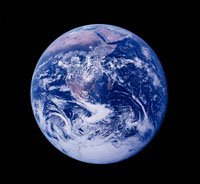
Although uniformitarian views dominated early thinking of ocean chemical evolution over geologic time, today we recognize that the composition of seawater has varied significantly over Earth’s history. Some changes are ingrained in our thinking (for example, that the Archean ocean was anoxic and iron-rich) while others are rarely considered. For example, if sulfate was a trace constituent of the Archean ocean, then the chemistry of hydrothermal fluids would have been significantly different (more reduced, with high hydrogen partial pressures and iron concentrations but low concentrations of hydrogen sulfide); this may be of significance to those considering such environments as the locus for the origin of life and for early ecosystems. Refinement of radiometric ages of banded iron formations suggest that their deposition was episodic, not continuous, and this may require us to rethink the notion of a persistently Fe-replete Archean ocean. The rise of atmospheric oxygen in the earliest Proterozoic ironically created the potential for highly reducing marine conditions with free hydrogen sulfide in the upper water column supporting anoxygenic phototrophs. The persistence of these conditions through the Proterozoic is uncertain, but when they occurred, the “pale blue dot” may have been pink. Strategies for life detection on distant planets is based in part on our interpretation of Earth’s oceanic and atmospheric evolution, and we have some way to go before we can confidently describe the evolutionary history and persistence of particular conditions on Earth.
 A Talk With Jim Green
A Talk With Jim Green What Can Extant Genomes Reveal About Early DNA Metabolism?
What Can Extant Genomes Reveal About Early DNA Metabolism? What We Talk About When We Talk About Earth's Oxygenation
What We Talk About When We Talk About Earth's Oxygenation Bowling With Astrobiologists: A Twisted Path Toward the Origin of DNA
Bowling With Astrobiologists: A Twisted Path Toward the Origin of DNA